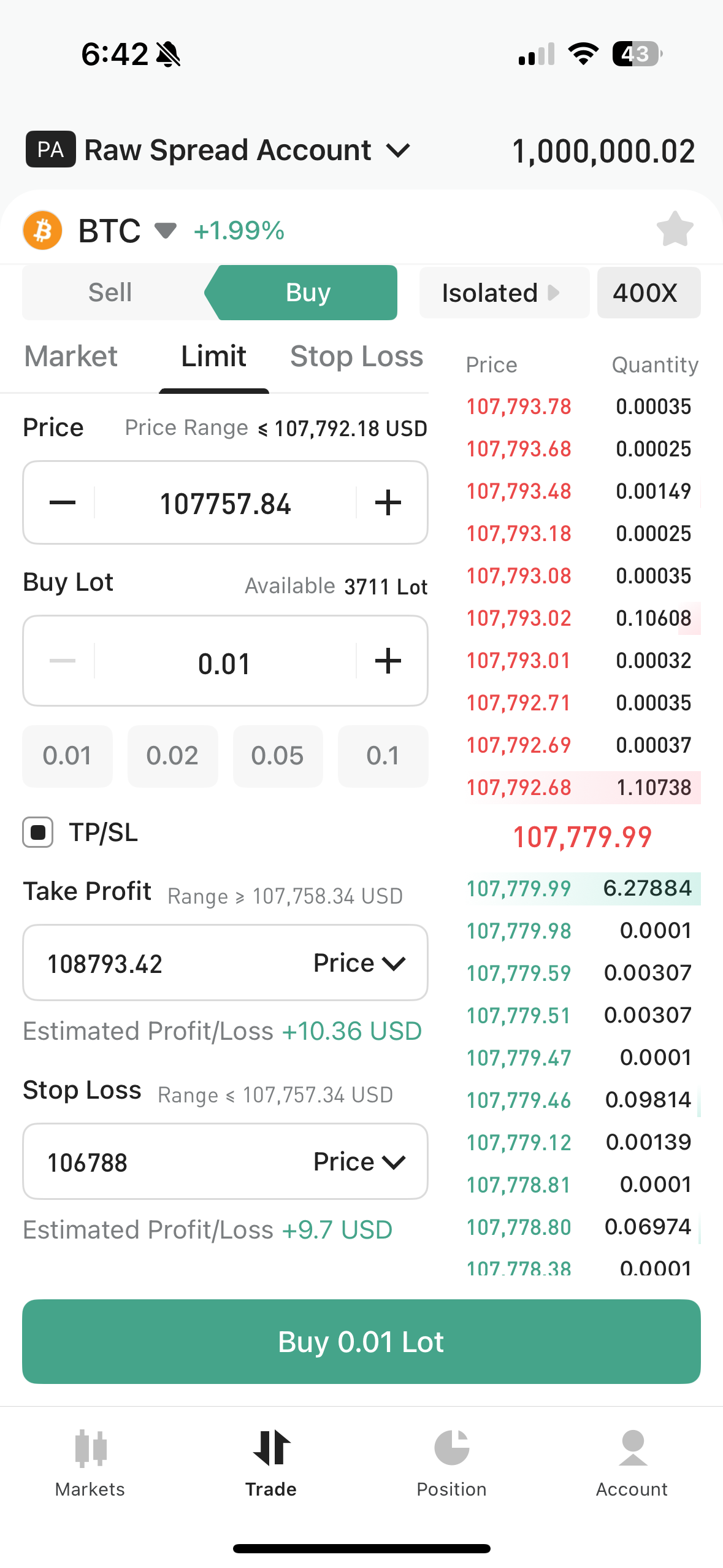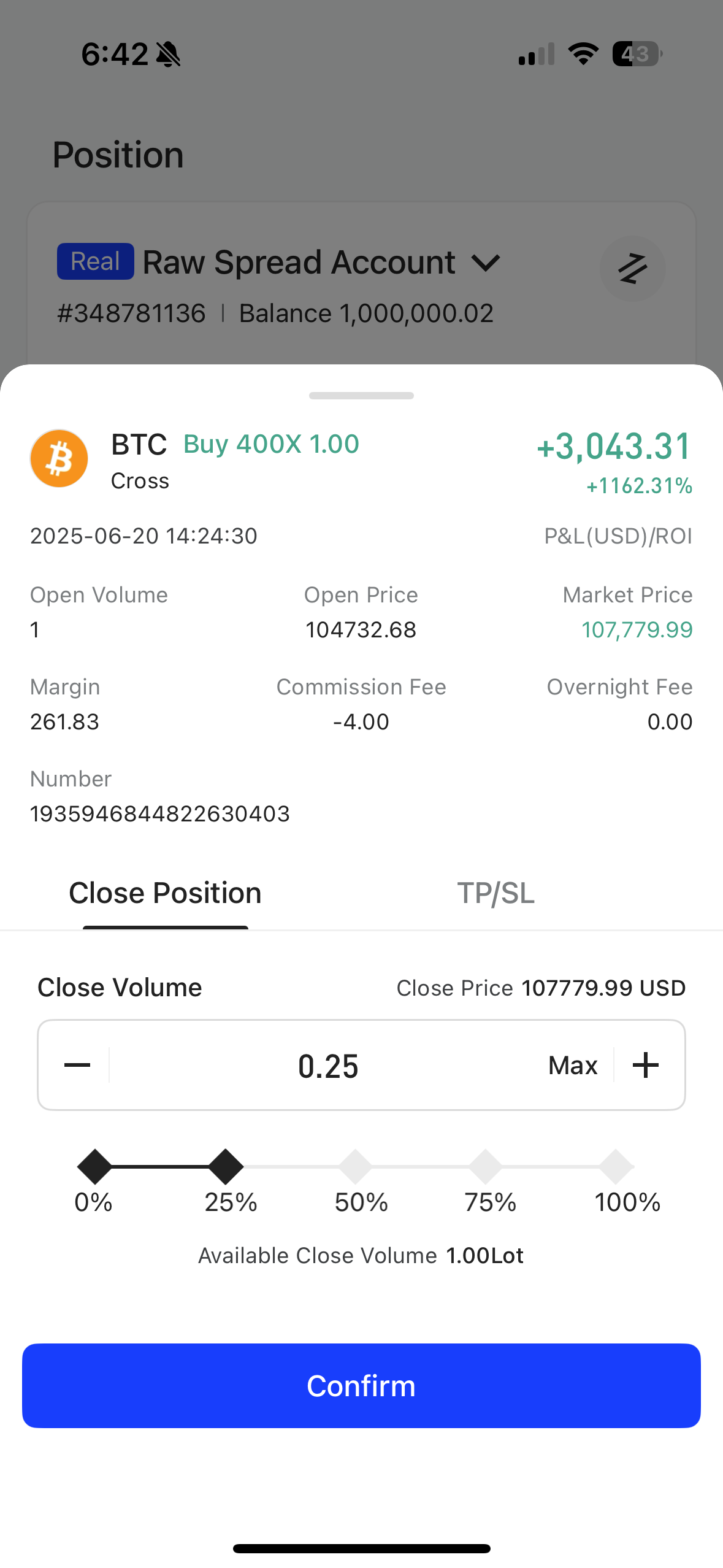Opening and Closing Positions
Executing an open position or entry mainly involves buying or selling a certain amount of a financial product. On the trading platform, this can be done by placing a market order, which is not executed as a result of its own transaction. Positions can also be triggered by pending orders.
To profit from exchange rate differences, it is necessary to close positions. When you close a position, you perform the opposite operation of the initial one. For example, if the first trade was to buy one lot of gold, then to close the position, you need to sell one lot of the same product.
There are several ways to open the order creation dialog: In the "Quotes" window, select the desired symbol and execute the "Trade" command from the context menu.
- If there are no positions or orders, select "Open Position" in the "Trade" tab.
- If there are existing positions or orders, use the context menu command in the "Trade" tab.
Performing one of these actions will open an order screen corresponding to the selected symbol's execution type:
- Market Order
- Limit Order
- Stop Order

Market Execution
In Market Execution mode, the trader agrees to execute the trade at the price provided by the broker.
Opening a Position In the order window, fill in the following fields:
- Symbol ― The symbol for the trade operation.
- Trade Operation Type ― Select the type corresponding to "Market Execution" mode. In this field, you can also switch to placing a pending order.
- Volume ― The trade volume in lots. To change the volume, use the arrow buttons or tap the box to enter the volume using the keyboard.
- Stop Loss ― The stop loss price. If you leave this field empty, this type of order will not be set.
- Take Profit ― The take profit price. If you leave this field empty, this type of order will not be set.
Closing a Position
To close a position, tap "Close Position" in the context menu on the "Positions" tab. Once you tap "Close Position," the position will be completely closed.
